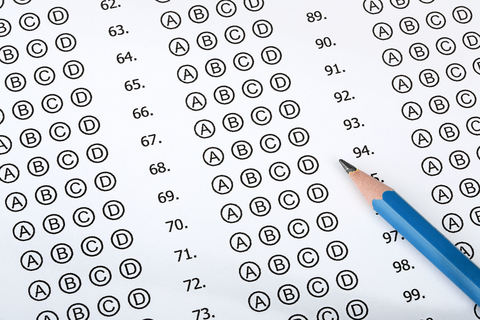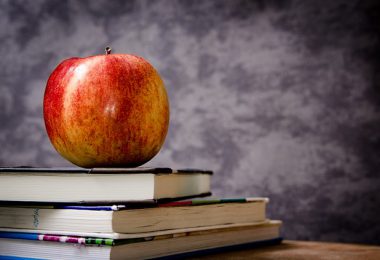The SAT’s Reading component makes up 50% of the score of the test’s Evidence-Based Reading and Writing section. Apart from math, it is the longest section of the test and is known for bogging down students. Don’t worry! We’ve put together a number of tips, tricks, and strategies to help you power through and ace the critical reading section!
About the Reading Section
The Reading component consists of 52 multiple-choice questions and is designed to be completed within 65 minutes. There are four types of passages that are always found in the reading section:
- Science: Two passages or pairs of passages about topics such as Earth science, physics, chemistry, or biology.
- Social sciences: A passage or pair of passages related to psychology, economics, sociology, or a similar topic.
- History: One passage or pair of passages from a historical speak or document
- Literature: One passage from a classic or contemporary literary work. This will never be a poem.
Typically passages are 400 to 850 words long and can be accompanied by a chart, graph, or image. All questions are based strictly on the text, meaning that you won’t need any outside knowledge about the topics.
What are you being tested on?
What many students don’t realize is that the Reading section isn’t testing your ability to read, but rather your ability to process information and search for answers. The key to success with any critical reading test is to read with a specific purpose in mind, know how and when to look for details, and figure out unfamiliar information through the clues within the text.
You can think of this as an open book test. All of the information you need to know can be found within the passages, you just need to find it.
The questions
There are two categories of questions that you’ll be asked on the Reading section: little picture and big picture. Little picture questions focus on the information found directly within the text. This can be defining words, or pulling details for a specific line of text. On average, these account for about 70% of the questions. Big picture questions are those that require you to take a step back and analyze the passage as a whole. These questions aren’t about specific details within the passage, and require you to make an inference based on the information provided.
There are a number of different themes you’ll find within the questions, including vocabulary, point-of-view, comparisons, inferences, and specific details to name a few. Each different theme of question is designed to test your critical reading and information recollection in a different way.
Believe it or not, the passage is the least important aspect of this test section. Many of the questions can be answered without reading the text just by taking clues from the wording and language used within them. However, we strongly discourage you from using this technique as it is not a time efficient way of ruling out irrelevant answers.
The strategy
Now that you have an idea of what to expect, you can start to come up with your strategy for the test. We recommend the following these four steps to help maximize your efficiency and success during the SAT Reading section.
1. Read the instructions
It may seem like common sense, but it’s important enough that we need to say it. Always read the instructions at the beginning of the test. Even if you think you know what the instructions are, read them again to be sure. This is an excellent habit to get into for all tests throughout your high school and college career, so start early!
In case you want to familiarize yourself early on, the instructions are as follows:
Each passage below is followed by questions based on its content. Answer the questions following each passage on the basis of what is stated or implied in that passage and in any introductory material that may be provided.
2. Read the passage
Believe it or not, there is a proper way to read these passages. Remember that the purpose of this section of the SAT is to test your ability to find information within a text. Start by looking over the questions before reading the actual passage. This will give you an idea of the type of information. Then, skim or lightly read through the passage. This does not mean reading the text as fast as you can, nor does it mean reading everything as carefully as possible. You should read with enough depth to understand the overall feel and theme of the piece without analyzing every single word.
In other words, use a balanced reading approach. Read to find the main topic or idea; organization and how the topic is discussed; author’s point of view; and the author’s purpose, or the point of the piece.
For longer pieces, start with the descriptions in italics at the beginning of the text. This will give you a general idea of the topic. Then begin reading the first paragraph to gain a sense of the main idea within the text. Next, read the first sentence of the following paragraphs to determine the layout and organization of the piece. Finally, read the final sentence of the last paragraph in order to determine the done and point of the passage.
Don’t be afraid to write in your test booklet! Many students seem hesitant to leave marks on their tests, but it’s an incredibly helpful strategy. It can help you maintain focus, especially when reading longer piece. This will also help you when you are re-reading the text to find answers.
Here are a few tips for making the most out of your mid-reading notes:
- Make notes about what’s covered in each paragraph: the topic, the purpose, and key points or arguments
- Underline words or phrases that indicate the author’s feelings about the topic
- Make note of any words or phrases that provide clues about the author’s viewpoint, or suggest what’s happening below the surface
3. Translate the questions
Sometimes reading SAT questions can feel like trying to read another language. It’s alright if you feel this way, because the questions are often written to confuse students. Before letting a question trip you up, take a moment to simplify and reword the question
For example, look at the following question: According to the passage the “language of bureaucracy” and the “language of liberation” are alike in that they take into account which of the following?
It’s a mouthful to say the least! However, when you break it down this question can be translated to:
How are the “language of bureaucracy” and the “language or liberation” alike?
Using this technique makes questions much less intimidating and easier to answer.
4. Find the answers
Little picture questions
As we mentioned before, 70% of the questions are going to be “little picture” questions, meaning that the answers can be found right in the text. Plan to spend approximately 1 minute on these types of questions.
Vocabulary and definition questions will often come with a line reference to indicate where said word was used. Find the word and read the line above and below it in order to gain context. Look for clues and other keywords in the surrounding sentences to help determine what the word means. Ensure that you always take into account the context of the sentence when answering the question. Blank out the word and read the sentence again get a sense of what it is try to convey.
Example: The clear sky, mother’s good mood, and a smile on dad’s face meant it was a propitious occasion to ask for the use of the familiar car.
If we’re looking to define propitious, we’d take note of the sentence mood. It seems to indicate that there is a chance for a good outcome (the mother’s good mood, and the father’s smile). We can infer that the meaning is similar to favorable or conducive.
Keep in mind that words always have connotations or other meanings. Just because a word on its own means one thing does not mean that it has the same definition within the particular lines or passage. Remember to always read the passage to gain context, and don’t be too quick to jump to the obvious choice.
Example: With with cockeyed mouth and his blackened teeth, he had a curious smile.
While curious often means inquisitive or eager to learn, in this case it means strange or unusual.
Something else to be aware of is that the lines provided as text references may not be exact. For example, if you are provided lines 33-36 as reference, the actual reference may appear in line 32 or line 37. These references are approximations and in order to gain a full understanding of the passage you should read a few lines above and below the provided reference.
Big picture questions
Now that you have sorted out the answers that appear within the text, you need to address the “big picture” questions; questions that require you to make an inference based on the text. Students tend to struggle with these types of questions because there is no concrete answer written out in the text.
The best place to start is by paraphrasing the passage. What message is it communicating? How does it get the message across? Next look for “trigger words” throughout the passage. However, but, and although all indicate a change in perspective, or disagreement with the previous statements. Words such as because or additionally provide support and often are an indication of agreement. Finally, you can almost always count on the last paragraph to provide a summary of the entire passage.
Something else to keep in mind is that if an inference seems far-fetched, chances are it is probably wrong. Your deduction should be sound and based on the information that you have read. In other words, though the exact answer may not be given in the text, you will find evidence and support for your answer in the text.
Tough questions
There is nothing saying that you need to answer the questions in order, so start with the easier questions and work your way up to the harder ones. This will provide you with a confidence boost and allow you to better budget your allotted time.
There are two types of questions students struggle with:
Except/Least/Not questions
These questions ask you to find four pieces of information for a single point. The trick is to save these until the end, as you may find clues in other questions.
Example: All of the following statements about pattern II children express differences between them and pattern I children EXCEPT:
a. They migrate for part of each year
b. They have fewer siblings
c. They spend less time contributing to family income
d. They spend more time in school
e. Their parents sometimes work at jobs other than farming.
Essentially, these are more complex True/False questions. All of the answers are true except for one. These types of questions can be solved by eliminating options until you are left with the one remaining false statement, which will be the correct answer.
Statement I, II, III questions
These questions are a triple True/False question. The best way to tackle them is by determining which statements are true and false, then eliminating answers from there.
Example:
According to the author, which of the following characteristics are common to both literature and biology?
i. They are concerned with living creatures
ii. They enrich human experience
iii. They are guided by scientific principles
a.i only
b. ii only
c. iii only
d. i and iii
e. i, ii, and iii
Begin by examining the statements and determining if any are false. If, for example, statement i happened to be false, you would be able to eliminate answers a, d, and e right away.
Other helpful hints
- Cross off incorrect answers. This will help you avoid re-reading them when trying to find the best choice. It will save you time and confusion in the long run.
- The passages are not ordered from easiest to hardest, nor are the questions. The questions are in chronological order, meaning that they follow the flow of the passage, starting with the first paragraph and concluding with the last.
- Write notes in the booklet as you read. Underline or circle key details or important points. This will keep you engages whi9le reading and help you to easily find important details.
- If you’re running out of time, focus on answering the specific questions first. These “little picture” questions will often have line references or other hints for easily finding the information within the text. If you still have time left after completing all of these, go back and answer the remaining “big picture” questions. Your previous answers could help you out when trying to answer these inference-based questions.
- The College Board (developers of the SAT) and ETS (the company who administers the SAT) do not want arguments over what they say the correct answers are. Specific answers are easier to argue against than vague ones. When in doubt, choose the vaguer answer!
- As the SAT is created and administered by American companies who focus on American clients with American values. So what? Correct answers are likely to reflect these values and will not reflect anti-American sentiments even if a critical question is asked. For example, if the question is “Why is the author critical of federal judges?” the answer will likely not be ‘He finds they do not base their decisions on the Constitution.”
- Though the SAT is a biased test, the creators do not want to to come across this way. In responding to questions about ethnic cultures, do not select answers that are dismissive of ethnic groups
- Beware of answers that contain the following words: must, always, impossible, never, cannot, each, every, totally, all, solely, only. These are common buzzwords
- When tackling paired passages, handle them one at a time. Read the first passage, and answer those questions to start. Then move onto the second passage and its specific question. Answer the questions about both passages last.
- Mentally answer questions in your own words before looking at the answer. This will help you selected the correct answer and not get lured in by distracting options.
Final thoughts
One of the best ways to ease any concerns you have is by taking practice tests. The College Board offers an Official SAT Study Guide with 8 practice tests available. These tests contain actual questions and passages from past exams and will give you an accurate idea of what to expect on test day.
Above all else, the best way to be prepared for the SAT Reading Section is to read! Read everything and anything that you can. Although it can help, you don’t need to hire an SAT tutor. Read everything and anything that you can. Magazines such as Scientific American and Discover both offer short, sophisticated articles similar to the passages that you might find in the Reading section.
Hopefully, this guide has helped ease your nerves and give you an idea of what to expect during the SAT Reading section. Be sure to check out our Applying to College section for more helpful SAT tips.







